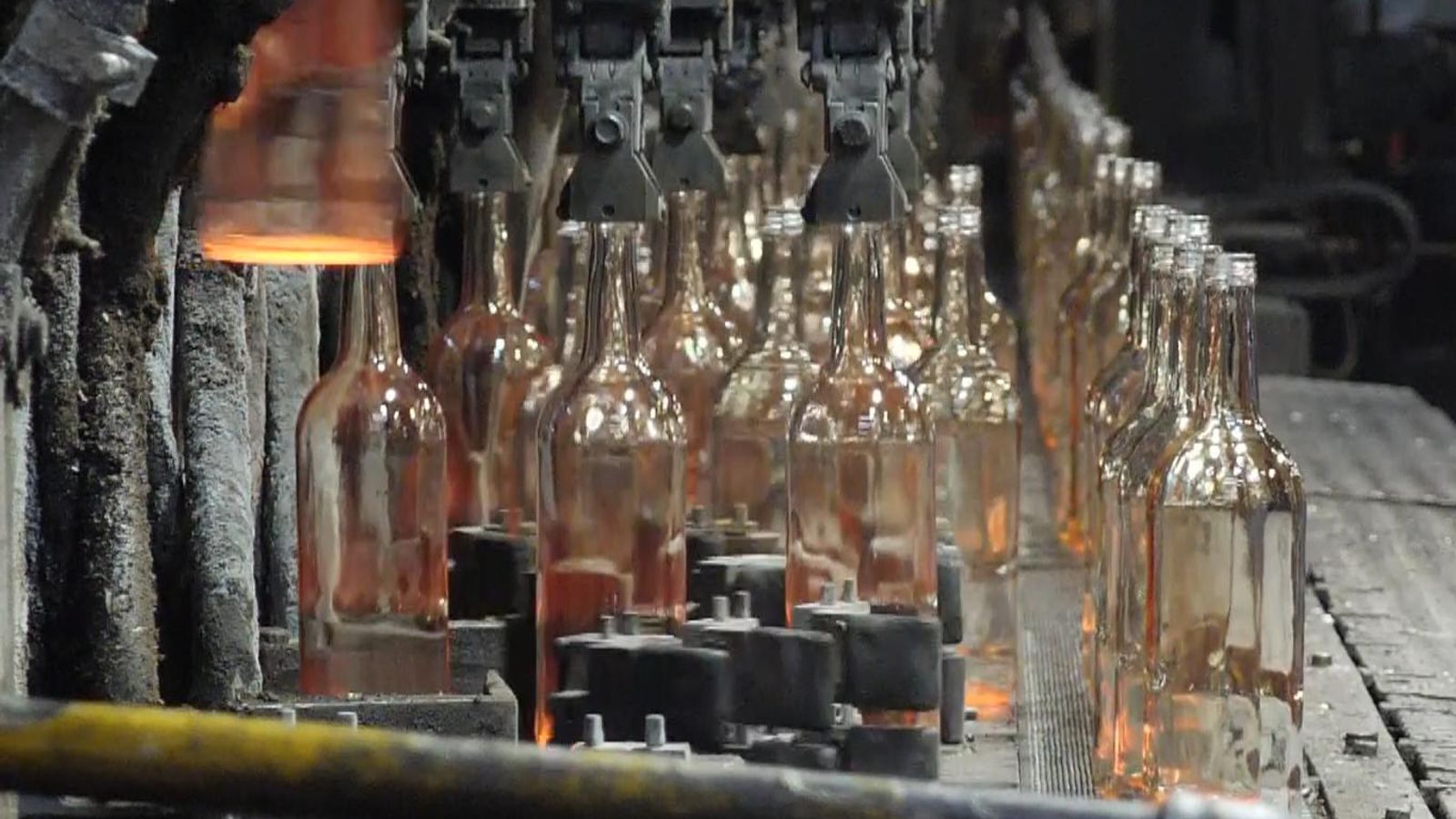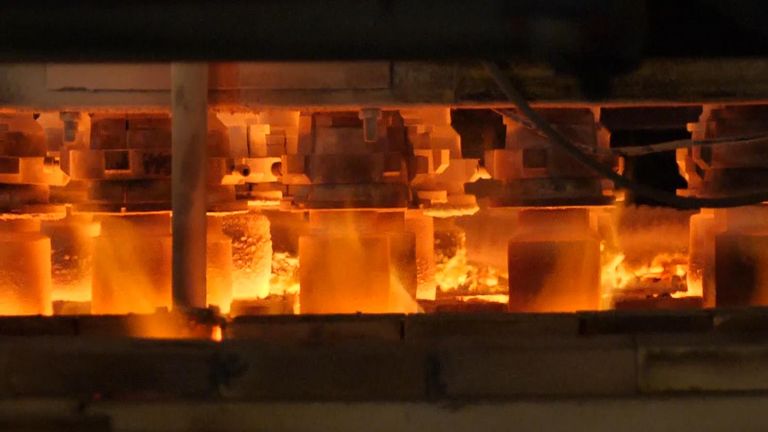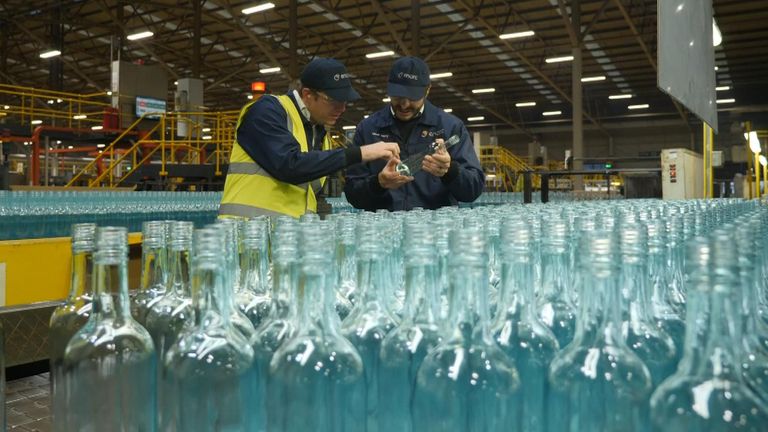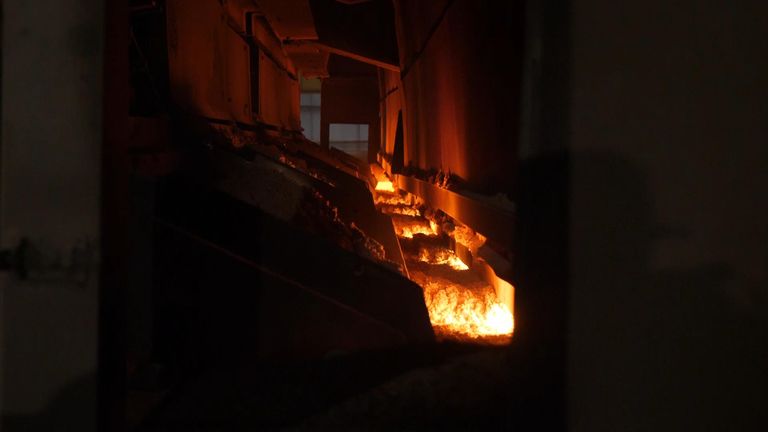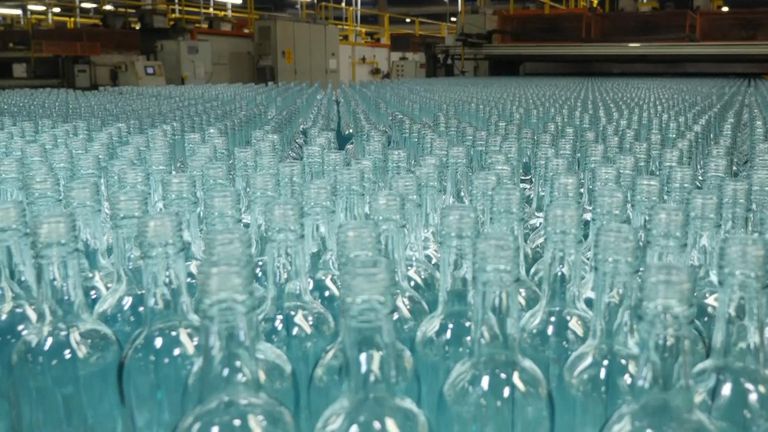If you crack open a bottle of something – be it wine, water or soft drinks – over the festive season, there’s a good chance the glass came from the Encirc factory in Cheshire.
Here, on the banks of the River Mersey, you will find one of the world’s largest glass factories. They take sand from Norfolk, soda ash created from the salt sitting beneath the Cheshire countryside and a lot of recycled glass and throw it into two of the biggest glass furnaces in the world.
There, in the furnace, at temperatures of around 1,600 degrees centigrade, the sand melts and becomes a liquid river of molten glass. It is a chemical reaction humans learnt thousands of years ago, but here at Encirc it’s carried out on a gargantuan scale.
This factory alone produces two billion bottles and containers a year, a number which is hard to process, until you note that it includes around 40% of all the wine bottles consumed in the UK.
That includes a significant proportion of all the New World wines we consume here, by the way. Mostly, the wine from Australia, California and Chile arrives not pre-bottled, but in large bags inside shipping containers, which are then emptied into metal vats at Encirc, from where they are pumped into bottles made here in the UK.
It’s an extraordinary site – a place which says a lot both about our appetite for liquids (both alcoholic and not) and our ability to turn raw materials into sophisticated products.
The struggle to get to net zero
But turning sand into glass is an enormously energy intensive process. Some of the heat in the furnace can be created by electric elements which heat the bottom of this enormous oven. But glassmakers like Encirc say it’s impossible to do what they do – making glass on a vast scale – without blasting that furnace with a very hot flame.
At the moment that flame is produced using methane – natural gas – with the upshot that this glassmaking facility produces rather a lot of carbon dioxide. And even if you could find a way of running their furnace without a naked flame it would still be producing a sizeable amount of CO2, since some of it derives from the chemical reaction as sand turns into glass.
In short, this glass factory is a pretty good illustration of how tricky it is to get to net zero. Much of the energy use in this country can be shifted from fossil fuels to green electricity – whether that’s vehicles or home heating. Sometimes the cost will be high; sometimes in the long run, going green will be cheaper than the status quo.
But for a handful of important industries it’s far, far harder. Glassmaking is one of those industries. You can run small furnaces on electric power but not the big ones you need to feed a massive glass container factory like this one.
Read more from Sky News:
The key economic graphs that define 2023
Big differences in house prices changes across the UK
All of which is why they are seeking another alternative. The most obvious route to allow this plant to decarbonise is to replace those methane flames with hydrogen ones, and then to collect all the CO2 coming out of the chimney and sequester it below the ground.
And, as it happens, the technology is pretty much there. We know how to make hydrogen both from natural gas and from electricity (the former still involves some carbon emissions; the latter is extremely expensive, so these options are not without their issues). We know how to capture carbon dioxide.
But there’s a couple of problems which have always deterred businesses like this from taking the leap. The first is that it hasn’t made any economic sense. Capturing carbon is expensive, so why do it when it’s cheaper to pay for carbon credits and carry on burning gas?
Location, location, location
The second is that the infrastructure isn’t yet there. Right now if you collected carbon dioxide from your chimney, there’s nowhere to put it. Someone needs to lay the pipes out to the depleted gas reservoirs under the sea where we might be able to store it. That’s also expensive.
All of which brings us to one of the least discussed, but arguably most important topics in the green energy transition: clusters. In short, if businesses like this glassmaker are going to green it is far more likely to happen if they can do so alongside other heavy industry players.
Look at the geography of the UK’s industries and the idea makes quite a lot of sense. Many of the country’s biggest polluters happen to be clustered relatively near each other on the coast. Alongside Encirc you’ll find one of the country’s biggest oil refineries, as well as the Inovyn (part of Ineos) chemicals plant, not to mention a major gas power station and, some miles further away in North Wales, a cement manufacturer.
All of these businesses have big energy demands. They would all benefit either from carbon capture or hydrogen. Squint a little bit into the future and you can envisage a world where they share pipes both taking the carbon away and delivering the hydrogen.
How to make it happen?
But how to create these clusters? How to finance them? How to coordinate the businesses that all want to make profits while fulfilling their commitments to reduce or eliminate their carbon emissions?
It’s a question no one has yet been able satisfactorily to answer, but whoever does will have that most precious of things: a blueprint about how to decarbonise the trickiest bit of the world’s carbon budget.
And guess what: it so happens the UK is further ahead of most other countries around the world in planning its blueprint for clusters. It now has detailed plans for how to fund, construct and run a series of major clusters: one around the Encirc factory (the Net Zero North West Cluster Plan), another in the Tees Valley (Tees Valley Net Zero), as well as plans for Scotland, for the Humber, for the Black Country and South Wales.
An area where the UK is genuinely leading
Thanks in part to government funding, which began in 2019, Britain’s clusters expertise is admired far and wide. While the US is widely seen as having taken the lead on industrial decarbonisation, thanks to its enormous Inflation Reduction Act set of subsidies, Americans – and many from Europe – have been regularly visiting the UK to understand how to do clusters.
There are many areas where UK politicians claim (without much basis) to be world leaders, but here is an area where it does actually have a world-beating proficiency. However, the government funding for clusters is coming to an end in March, and those working here are nervous that this could be another area where the country squanders an early lead and soon becomes a laggard.
While the cluster in Cheshire looks likely to become a physical reality, with companies soon laying the pipes that will connect plans to hydrogen and carbon dioxide pipes, those in the Black Country and elsewhere are much less advanced.
It’s something to ponder as you have a drink over the festive season. It’s tempting to assume that Britain no longer makes much of anything any more. However, visit plants like the Encirc one, and you realise that that is very far off the mark.
And there’s a prospect that this country, which brought the world the Industrial Revolution, could be at the forefront of managing the green Industrial Revolution. In a few years’ time that glass could be truly low carbon – maybe in due course it could be zero carbon. But it will take a lot more work – especially on clusters – to make it a reality.
